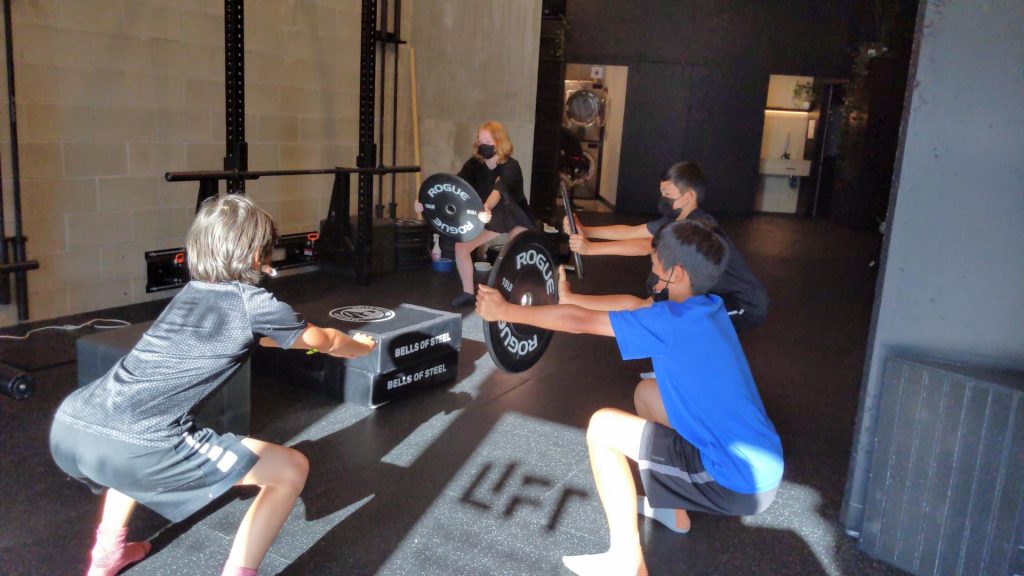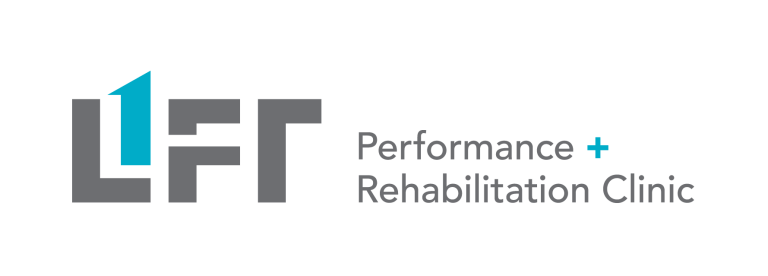We asked 2 top strength and conditioning coaches to share their thoughts about strength and conditioning for youth. Let's hear what they have to say!
Meet Cody Low and Max Pecarsky.
Cody is the director of strength and conditioning at Lift Clinic. He comes from a background of over a decade in this field. His experiences range from being a director of strength and conditioning at local colleges, working with Team Canada’s Women’s Soccer, and helping hundreds of athletes age 10 and up train to reach for their dreams whether that means making their school team or going to the Olympics.
Max has a background working with young athletes from multiple sports, ranging from provincial and nationally ranked athletes to young locals in the community trying to make their high school team for the first time. Max has even coached basketball as well. He understands that youth strength and conditioning is about getting benefits, but also having fun and wanting to do it again.
If you’re interested to learn more about our youth strength and conditioning programs, check out our link here or contact us by phone or email! Booking is available online or by phone.
Okay, let’s hear what they have to share about helping youth get stronger, move better and perform their best!
What would you do today if you could start your strength and conditioning over at age 12?
Cody: First, I would remind myself it’s not all about bicep curls and bench press. I’d be careful not to skip core, legs and quality movement. Instead, I would emphasize good quality movement, seek out coaching and use a variety of top exercises for strength and performance.
Max: I’d want to take advantage of good quality exercise programming to help reduce risk of injury so that I could train harder and prolong my athletic career.
What is an appropriate age to start strength and conditioning?
Cody: Really you can start at any age. Even as young as 4 or 5 years old.
At its core, strength and conditioning principles are simply about good quality movement and progressive overload. There is no wrong time to start teaching kids about good quality movement.
Progressive overload simply means, gradually adding to the demand you place on the body, in a way that it’s ready for and builds upon what you’ve already done.
What are some of the most harmful myths around strength and conditioning?
Max: A lot of parents are concerned that lifting weights will stunt their childrens’ growth. Research shows that’s not true – if things are done properly, coached properly, then kids can expect benefits that will last their career.
Cody: To add to what Max has said, some people have also had concerns about potential for injury, or that it’s bad for their joints. That’s why we promote strength and conditioning. When kids come to get guided, well-coached movement training, they get improved health outcomes and decreased injury risk.
What would you avoid as a young person getting into strength and conditioning?
Max: Avoid getting into it without good quality coaching or guidance. The goal is to maximize your benefits and minimize your risks such as failing to achieve relevant sport specific outcomes, or getting hurt because of a flaw in your technique.
What percentage of results do you feel you would get from training on your own without instruction or supervision, vs being coached by a professional at Lift Clinic?
Cody: Youth will get benefit from starting a strength and conditioning program whether you do it on your own or if you come here to train. What you’ll get from coming here is a better balanced program and learn how to optimize your movement to create balance in your own body. This is critical for physical development and sport performance so that you can perform better on the field or court.
Max: Our aim is to empower athletes. We understand that being trained and our opportunities to work with young athletes are to help educate people so that they can take this knowledge with them. This will help you to be healthier and have a longer career in your sport.
Start your strength and conditioning journey at Lift Clinic today.
What are some of the components of a good quality strength and conditioning program?
Cody: Understand foundational movement patterns. Squat, hinge, pull, press. We see kids often just trying to do bench press with as much weight as possible. But they can’t even do a proper pushup. This kind of weakness and inability to connect their body from the lower body to the upper body tells us that they’re going to be limited in their sports. They’re going to have trouble performing skills with power, such as battling for a 50/50 ball in basketball.
Max: Bracing strategies for your core. Mobility. How to move properly. There are so many little components that kids need to know about how to move properly. So here they can learn how to break these movements down properly, and get more benefit out of it in the end.
Are there examples of kids getting stronger but yet moving worse as they increase in strength and mass?
Cody: This is a common problem especially with teenage boys. Often pushing through lifting heavier weights, feeling it in the wrong places like the back, and just loading more and more because they see the weights going up and the mass gains. But what they’re missing is they won’t see that transfer onto the field.
This is why training proper movement patterns is so important – we want the strength gains AND better movement quality. This will help us to get the results we want on the field and in life.

What are some of the issues that you see for female athletes that can be helped by strength and conditioning from a young age?
Cody: Take for example young female athletes – research shows they have a 5x higher risk of severe knee injuries. If we can work on jumping, change of direction, landing movement patterns, we can reduce the risk of these injuries.
Max: We also want to break the stigma that a girl can’t be in the gym; that through their sport they’re going to gradually get better. But if you look at the States for example, many schools have a good quality gym, and getting girls into the gym are helping them to improve in their performance and find confidence.
Cody: We also find a lot of young women are worried about getting big and bulky. This simply isn’t happening.
What’s important is to be able to gain some muscle size in critical areas such as the quads/hamstrings for the sake of knee health – but not to be worried about getting big and bulky.
We do see this concern among young athletes in sports like rhythmic gymnastics, ballet etc... are there ways that these athletes can train to get the performance benefits without increasing mass?
Cody: Yes. For example, one of the first adaptations that takes place as you train is improving the efficiency of the neuromuscular system. There are programming variables that can allow us to target performance gains such as explosive jumping and movement quality, without adding bulk.
If we had an athlete starting strength and conditioning at age 12, and being able to stick with it through their whole high school and club sport career - how does that make you feel?
Cody: Super prideful, firstly! The biggest thing we can advocate for youth, is consistency. They’ll see big improvements especially in times following their growth spurts.
We get excited to see these athletes progressing through the years and into a long and successful athletic career, and good health outcomes beyond their sporting careers.
Max: It’s exciting to see the progression as athletes get to seeing results. Like when you get a text saying “yo I threw down and dunked off two feet today” for the first time. Or even when you see small incremental gains layered on top of their good quality movements.
Any final remarks?
Cody: Don’t be that guy who shows up to the gym drinking an energy drink, knowing every ingredient in the energy drink, but not knowing how to squat, bench or do a proper pushup!
A word from the author
All of our clinicians at Lift Clinic have experience as young athletes ourselves, with varied exposure to quality coaching in sport and exercise. Without exception, we all agree that today, there is so much more knowledge and opportunity available to kids and teens.
One of the main reasons for this is the advancements in the professions of physical therapy and strength and conditioning. The information age has brought the ability to freely and rapidly learn and share information.
As a physiotherapist and certified strength and conditioning coach, I often look back on the periods in my teens where I trained consistently in the gym. I gained substantial strength and did see improvements on the field. But I didn’t improve mobility, and I believe my field gains could have been greater – especially in areas such as vertical jump and sprinting speed.
It wasn’t until decades later as a physio and strength coach that I’ve been able to learn the most important keys to optimal movement and strength training.
At Lift Clinic, we’ve built a space and a team to help bring this knowledge to today’s teens. The idea of consistent functional gains and fewer injuries – and simply what you could look like after 2-5 yeas of consistent, well coached training throughout your teens – motivates us.
